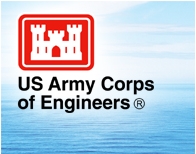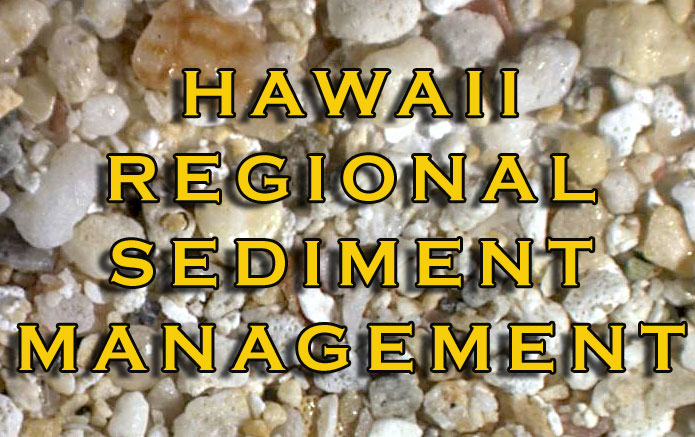


The Honolulu District of the U.S. Army Corps of Engineers recently completed a Regional Sediment Management (RSM) plan on the southeast shores of O'ahu. The project was co-sponsored by the State of Hawai'i Department of Land and Natural Resources (DLNR) Office of Conservation and Coastal Lands (OCCL) and the study area ranges from Makapu'u Point to Mokapu Peninsula. That study provided guidance on solving sediment problems in the region using a systems approach that considers the entire region from the mountains to the sea. The plan included conceptual demonstration projects at Ka'elepulu Stream, Lanikai, Bellows AFS, Kaiona Beach, and Kaupo Beach.
The M2M RSM culminated with the 2009 Southeast O'ahu (Mokapu to Makapu'u) Regional Sediment Management Plan report. The Lanikai conceptual study within the RSM plan focused on beach restoration options for Lanikai Beach, including beach nourishment with and without structures. The RSM has been extended to include the design for a pilot beach restoration project on the southern Lanikai shoreline.
The pilot project is located at the Pokole Way beach access along a shoreline reach that has been hardened with seawalls and revetments. There is presently no dry beach along this reach due to chronic erosion. The erosion history of this shoreline reach has been analyzed by the University of Hawai'i Coastal Geology Group, who produced erosion maps for southeast O'ahu as part of the M2M RSM report and found erosion rates of 9 feet/year near Wailea Point. As a result of the erosion, an extensive system of seawalls and revetments has been constructed to stabilize the shoreline. This report presents the design of a pilot beach project along the southern Lanikai shoreline.
Oceanographic design parameters were determined and design wave characteristics were produced based on these findings. A beach cell stabilized by two tuned T-head groins was designed at the Pokole Way beach access. The design includes a beach with a minimum 30-foot wide beach crest, where the beach crest is defined as the area between the vegetation line and the top of the beach face. The groin design utilizes geotextile tubes and the project requires a total of 22,100 cubic yards of sand.
Construction cost for the project is estimated to be $4,750,000. The cost estimate assumes that there is a suitable sand source available. The cost of $150 per cubic yard of sand utilized in this estimate was developed based on cost estimates for offshore sand recovery at other locations in Hawaii. A more detailed site-specific estimate from a dredging contractor could result in a different cost.